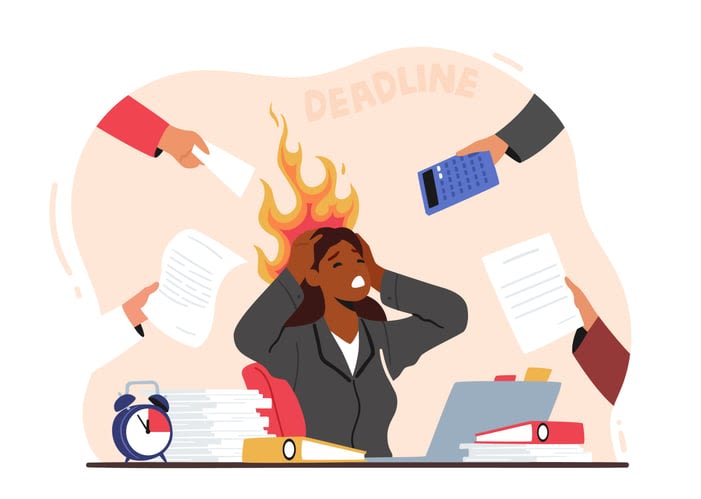Looking to boost your time productivity? You’re in the right place. Guided by efficiency and simplicity, this article cuts through the clutter to present actionable techniques to refine your daily routine and sharpen your task management. With focused discussions on tools like Kumospace, you can elevate your team’s remote productivity and streamline your own work process. Ready to gain hours and lose stress? Let’s get started.
Key takeaways
- Kumospace enhances productivity for remote teams through tools for collaboration, seamless integration with productivity apps, and advanced analytics for time management insights.
- Effective time management strategies, including the Eisenhower Matrix for task prioritization, time blocking, and the Pomodoro Technique, aid in structuring your day for optimal productivity and focus.
- Delegating responsibilities empowers team members, and say no to non-essential tasks to avoid overload, while optimizing and reducing unnecessary meetings improves productivity and engagement.
Harnessing Kumospace for enhanced time productivity
Imagine a tool that not only facilitates remote work but enhances time productivity, establishing an environment where time management and productivity are deeply interconnected. That’s exactly what Kumospace does. As the #1 virtual workplace tool, Kumospace empowers remote teams, offering the tools and space needed to deliver top performance from anywhere in the world.
Transforming team workflows with virtual offices
So, how does Kumospace transform team workflows and dynamics? By creating a virtual office environment that enhances team productivity, collaboration, and company culture.
Team socialization and bonding are facilitated through:
- Casual interactions
- Activities after All Hands
- Face time with leaders
- The use of collaborative online tools like whiteboards and digital games.
Moreover, Kumospace offers project management tools and features that lead to efficient task completion, goal achievement, and even minimizes the need for check-in meetings through effective communication apps.
Integrating productivity apps for seamless operations
The beauty of Kumospace lies in its seamless integration with productivity apps, contributing to a more efficient virtual workspace. It allows teams to connect with the apps they already use, customizing their workspace to suit their needs.
Imagine automating repetitive workflows and tasks in the same way you use tools like IfTTT and Zapier, or accelerating your email experience with Superhuman’s link to Gmail or Outlook.
Leveraging advanced analytics for insightful time management
Kumospace is not just about providing tools; it’s about offering insights for better time management. Did you know that 2 out of 3 workers feel more productive remotely with Kumospace? It’s no surprise considering Kumospace provides advanced people analytics for visibility into how teams spend their time in the virtual office.
Furthermore, Kumospace leverages artificial intelligence to reduce meetings by offering summarized ‘highlight reels’ or searchable transcripts, saving you precious time.
Crafting a daily planner with purpose
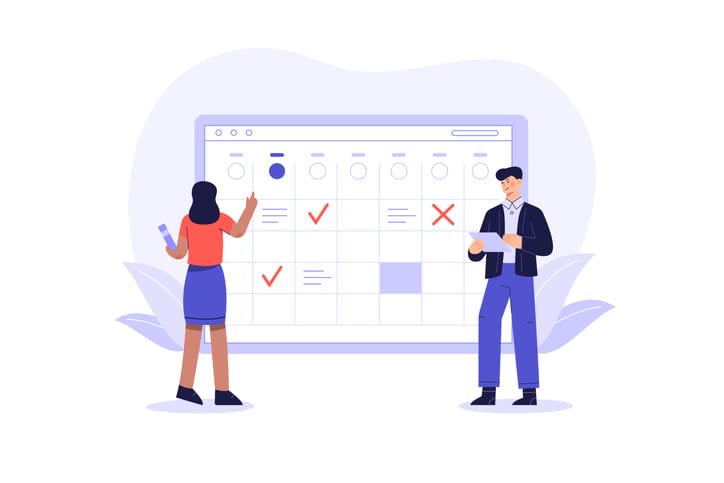
Let’s shift our focus to the importance of daily planning. A purpose-driven daily planner helps prioritize tasks, set realistic timelines, and maintain motivation.
By understanding the necessary actions to achieve long-term goals, we can include relevant tasks in a master plan, which then guides the creation of a daily schedule with a specific task in mind.
Identifying important tasks for your to-do list
Now, how do we identify those important tasks? The Eisenhower Matrix is a powerful tool that helps prioritize tasks based on importance and urgency. Urgent and important tasks are tackled first, while important but not urgent tasks are scheduled for later execution. By limiting the number of tasks per quadrant and establishing a hierarchy, we ensure that critical tasks are not neglected and work efficiency is increased.
Structuring your day around priorities
Once we’ve identified our important tasks, we need to structure our day around these priorities. Allocating specific periods during the day for deep work is crucial for progressing in tasks that require high levels of focus and creativity. Furthermore, the Pomodoro Technique offers a system to optimize productivity by breaking work into shorter, focused intervals followed by breaks, ensuring consistent energy throughout the day.
Time blocking also allows individuals to define their own schedules, facilitating the declination of non-priority requests, and minimizing interruptions.
The art of delegating responsibilities

On to another crucial aspect of time management and productivity - delegating responsibilities. By entrusting tasks and roles to a team member, we not only empower them but also foster trust and improve overall productivity. Utilizing a task manager can further streamline this process, ensuring that everyone stays on track and focused.
It allows managers to focus on strategic tasks while enabling employees to grow by taking on responsibilities that play to their strengths.
Empowering team members through autonomy
How does delegation empower team members? By granting them autonomy, we enhance:
- Innovation
- Agile decision-making
- Engagement
- Efficient and time-saving outcomes
Autonomy cultivates a sense of ownership and responsibility among employees, leading to better performance and greater satisfaction.
In fact, effective delegation enables project managers to concentrate on high-priority tasks, thereby lightening their workload.
Avoiding overload by saying no to less important work
The art of delegation also involves saying no to less important work. By managing time and prioritizing important tasks, we maintain productivity and focus on clear goals. The ‘Delete’ quadrant of the Eisenhower Matrix comes into play here, signifying that non-urgent and unimportant tasks should be eliminated from the to-do list and are potential tasks to decline.
Optimizing meetings for productive outcomes

Meetings are a necessary part of any business, but they can also be a drain on productivity if not managed properly. Through effective communication, structured focus, and respect for participants’ time, we can optimize meetings for productive outcomes.
Moreover, reducing the frequency of meetings can have a positive impact on productivity by minimizing disruptions and allowing for more focused work time.
Reducing frequency and duration of unnecessary meetings
Often, we find ourselves in meetings that seem endless and unnecessary. By conducting a meeting audit, we can ensure their effectiveness and value, removing those that are not valuable or necessary. Recording meetings and sharing them with those who couldn’t attend keeps everyone informed without the need for everyone to be present.
Providing clear, bulleted to do lists of action items after meetings can decrease the need for follow-up meetings. And yes, it’s okay to decline meetings that don’t require your involvement.
Enhancing meeting quality with Kumospace features
While minimizing unnecessary meetings is essential, enhancing the quality of necessary meetings is equally important. And this is where Kumospace shines. With its interactive tools designed to acknowledge and celebrate significant team moments, Kumospace makes meetings more engaging and cohesive.
After all, celebrating team milestones is an integral part of enhancing the quality of team meetings and overall engagement.
Productivity hacks for everyday efficiency
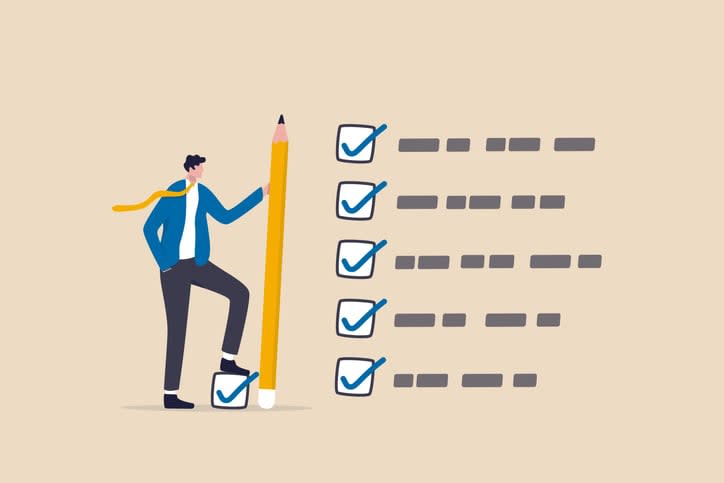
Now that we’ve covered the major areas to improve productivity, let’s delve into some productivity hacks that can transform your workday. From mastering the Pomodoro Technique to implementing time blocking, these hacks promise to elevate your daily productivity. As productivity experts suggest, adopting these techniques can lead to significant improvements in your work efficiency.
Mastering the Pomodoro Technique for focused sprints
The Pomodoro Technique is a time management method that breaks work into intervals, traditionally 25 minutes in length, followed by short breaks. This method enhances focus and concentration by providing regular scheduled breaks, helping to maintain high levels of energy throughout the workday.
Breaking work into short sprints reduces the cognitive load and can increase productivity. By recording how many Pomodoros are spent on each task and reflecting on this as a part of daily review routines, you can track your progress and stay focused on your tasks.
Implementing time blocking for undivided attention to tasks
Another productivity hack is time blocking. This technique enhances task organization through batching, allowing for the prioritization of projects and more effective workload management. Color-coding tasks based on priority levels can help visualize and organize them according to their importance and urgency within a time blocked schedule.
By scheduling ‘me’ time for uninterrupted work, you can ensure personal productivity and enjoy uninterrupted time, reducing meeting frequency.
Achieving 'inbox zero' with smart email management
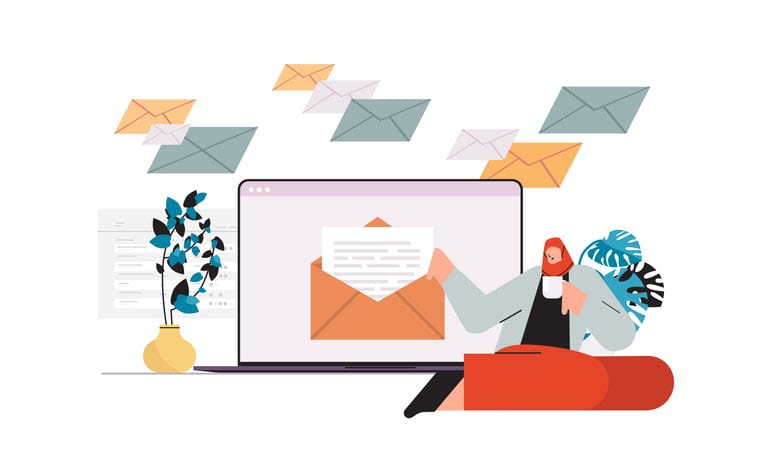
Let’s shift our focus to emails, which can often become a source of stress and clutter. However, with the strategy of ‘Inbox Zero’ and the right tools, you can streamline your email processing and set boundaries for email checking times, thereby preventing your inbox from overwhelming your workday.
Streamlining email processing
How do we streamline email processing? By dealing with emails immediately upon opening, we avoid using the inbox as a to-do list. The five key actions recommended for processing emails are:
- Delete or archive
- Delegate
- Respond
- Defer
- Do
Implementing the ‘two-minute action rule’ for quick tasks can also contribute to a more productive workday and prevent small tasks from piling up.
Setting boundaries for email checking times
Setting boundaries for email checking times is equally important. Designating specific times for email review and response during the entire day can increase productivity and prevent disruptions to more critical work. Emails should be processed periodically throughout the day, rather than constantly, to avoid distractions.
Setting specific times for processing emails in a ‘requires response’ folder can improve time management.
Weekly review and planning for continuous improvement
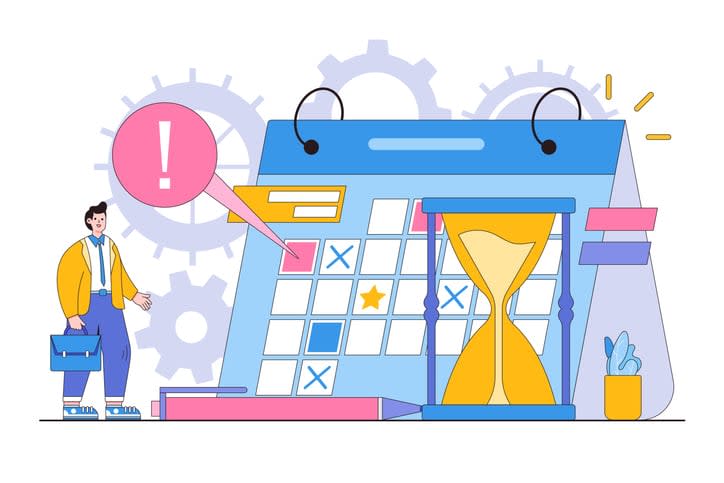
Now, let’s talk about the power of reflection and planning. Weekly reviews and planning promote continuous improvement by assessing accomplishments, setbacks, and establishing priorities for the upcoming week.
Assessing accomplishments and setbacks
Reflecting on past achievements and setbacks provides valuable insights for future goal-setting and productivity improvement. Weekly reviews involve a period of reflection to objectively evaluate what was accomplished compared to what was planned, enhancing clarity and direction.
Reflecting on setbacks is essential, as they are a natural part of long-term success and can reveal underlying barriers to change.
Establishing next week's top priority and rocks
Part of the weekly review process is to plan for the next week, ensuring that priorities and important task are clearly outlined. Outlining top priorities as part of the planning helps to focus on the most important tasks for the upcoming week.
Preparing for upcoming tasks helps in managing the workload effectively and ensures readiness for the week ahead. By proactively planning ahead, it prevents a reactive approach to workload, allowing for better time management and productivity.
Summary
In summary, enhancing productivity and managing time effectively involves a variety of strategies, tools, and habits. From harnessing the features of Kumospace to crafting a daily planner with purpose, delegating responsibilities, optimizing meetings, implementing productivity hacks, achieving ‘Inbox Zero,’ and conducting weekly reviews, we’ve covered a breadth of strategies to transform your workday. It’s time to take charge of your productivity and time management- the keys to your success are in your hands!
Frequently Asked Questions
Productivity time is a measure of how much work is accomplished in a specific amount of time. The more work completed during this time, the higher the level of productivity.
The 4 P's of time management are prioritization, planning, process, and positivity, helping you focus on what's most important and manage time effectively.
To improve time management, set reminders for tasks, create a daily planner, allocate time limits to tasks, eliminate distractions, and establish a routine. These steps can help you achieve greater productivity.
Good time management skills are essential for increased productivity, as they enable a person to get more work done in a given amount of time. Efficiently dividing time for tasks leads to better productivity, work-life balance, and project progress.
Kumospace offers a virtual workspace designed to improve collaboration, productivity, and company culture for remote and hybrid teams.
